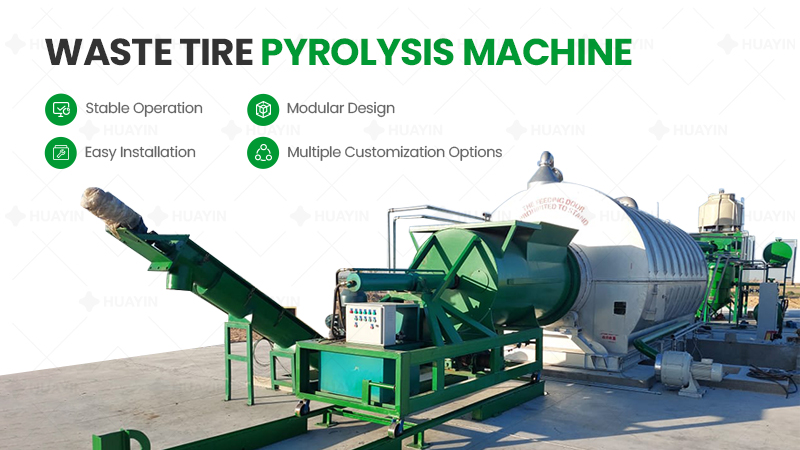With the continuous development of the economy, the production of tires is also increasing rapidly. However, in the process of the expansion and development of the industry, there are more and more problems that follow, among which the most troublesome is the disposal of waste tires. Tires are made of non-melting or refractory polymer elastic materials, and it takes hundreds of years for the macromolecules of these materials to decompose to the extent that they do not affect the growth of plants in the soil. However, landfill, combustion and other methods of dealing with solid waste are not applicable to waste tires. More and more waste tires are causing serious “black pollution” to the earth, posing great challenges to environmental protection.
The pyrolysis plant adopts the “micro-negative pressure thermal cracking” technology to process waste tires to produce four products: fuel oil, carbon black, and steel wire.
Different from traditional oil refining, in the cascade recycling of waste tires, thermal cracking is the reduction and harmless utilization of waste tires on the premise of meeting environmental protection requirements. The pollution problems will be minimized by means of upgrading technology, innovating processes, and installing environmental protection facilities.

Advantages of new pyrolysis plant:
1. The equipment adopts the world’s top technology – zero peeling technology. In the process of decomposition, there is no need to use a special process to separate the steel wire and rubber twice. This operation plays a key role in reducing energy consumption, thereby reducing capital investment. To a certain extent, the economic benefits have been increased.
2. In order to effectively ensure that the gas does not overflow during the production process and improve the pyrolysis efficiency, the pyrolysis adopts the micro-negative pressure process technology, which has the advantage of fundamentally eliminating the hidden dangers of unsafety caused by gas overflow.
3. During the production process of the equipment, most of the rubber is turned into liquid oil after pyrolysis, and a small amount of flammable gas is circulated as the fuel of the pyrolysis furnace. Therefore, the thermal energy supply of the pyrolysis furnace is ensured, the exhaust gas emission is reduced, and the economic and environmental benefits are improved.
4. The equipment design conforms to international standards, the structure is compact, the production line design is scientific and efficient, the operation is safe and stable, the processing capacity is strong, and the collocation of various systems is appropriate and reasonable, which has positive significance for improving work efficiency, reducing energy consumption and protecting the ecological environment.



